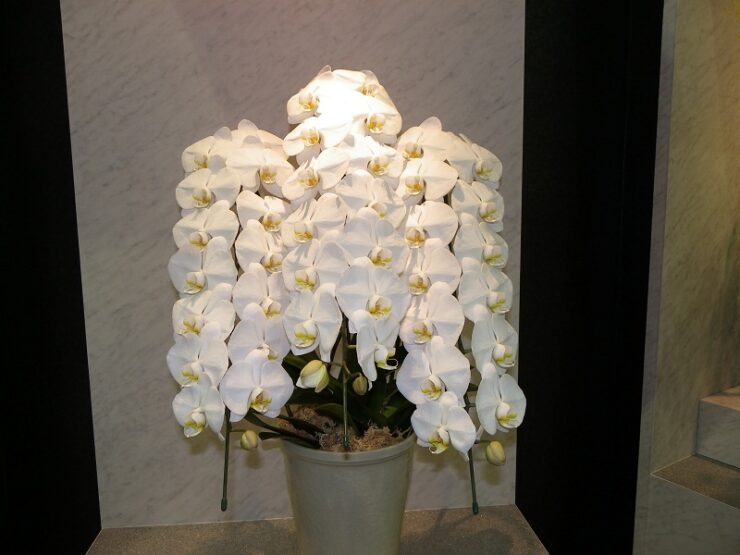In this article, we will explore the captivating allure and significance of the August birth orchid, known as the Phalaenopsis, which holds a cherished position in the realm of flowers and is highly esteemed for its striking appearance and cultural symbolism.
The Phalaenopsis, also referred to as the “moth orchid,” is a popular choice among orchid enthusiasts due to its elegant and long-lasting flowers that come in a variety of colors, such as white, pink, yellow, and purple.
Beyond its aesthetic charm, this orchid also holds cultural importance in different parts of the world, with some societies associating it with love, luxury, and grace, while others view it as a symbol of refinement and elegance.
As we delve deeper into the August birth orchid, we will uncover the various meanings and customs linked to this extraordinary flower.
History
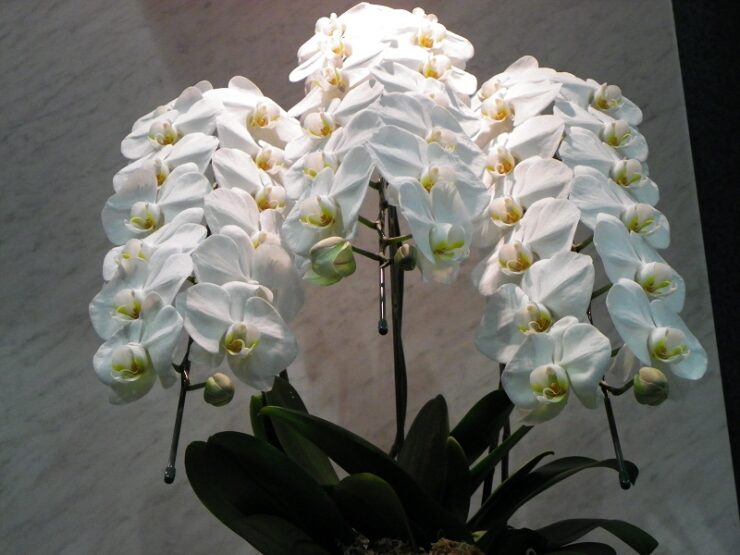
Phalaenopsis orchids have a rich and fascinating history dating back centuries. Native to tropical regions of Asia and Australia, Phalaenopsis orchids have captivated the hearts of people across the globe with their beauty and elegance.
The genus was first described in 1825 by the Dutch botanist C.L. Blume. Since then, the number of species within the Phalaenopsis genus has grown to over 70, with countless hybrids and varieties.
During the Victorian era, the fascination with orchids, including Phalaenopsis, reached new heights. Collectors and horticulturists from Europe ventured into tropical regions in search of rare and exotic species. This period, known as “Orchidelirium,” saw a boom in the cultivation and trade of orchids, with Phalaenopsis being a prominent part of this craze.
As orchid cultivation techniques improved over time, Phalaenopsis orchids became more accessible and popular among hobbyists. Today, they are widely cultivated in various parts of the world, with enthusiasts breeding new hybrids to create stunning combinations of colors, patterns, and shapes.
Symbolism and Cultural Significance
Beyond its beauty, this orchid also holds cultural importance in different parts of the world, with various societies associating it with different meanings and customs. Let’s explore some of the key aspects of the Phalaenopsis orchid’s symbolism and cultural significance:
- Love and beauty: The Phalaenopsis orchid is often associated with love and beauty due to its stunning and delicate appearance. Its flowers evoke a sense of elegance and romanticism, making it a popular choice for wedding decorations, bouquets, and as gifts for loved ones.
- Purity and innocence: In some cultures, the Phalaenopsis orchid is believed to symbolize purity and innocence. Its pure white petals and delicate appearance make it a fitting symbol for these positive qualities.
- Strength and resilience: The Phalaenopsis orchid’s resilience and adaptability have led to its association with strength and determination. Despite its delicate appearance, this orchid can tolerate a range of growing conditions, making it a fitting symbol for those who are strong and adaptable.
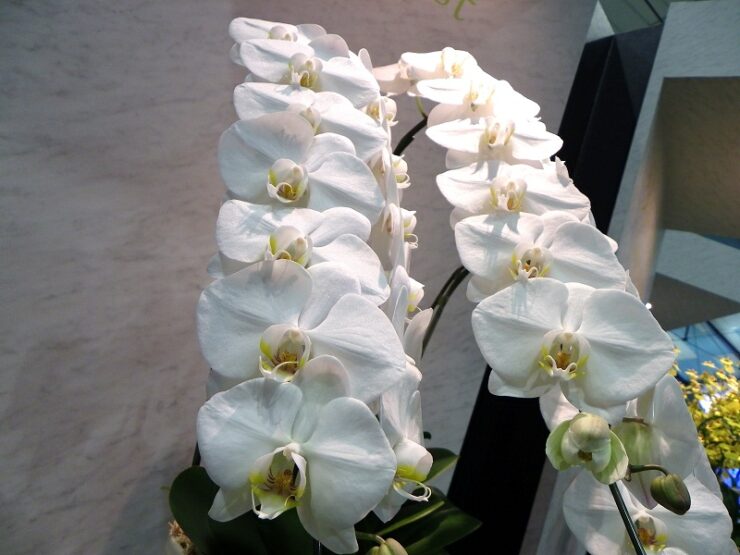
Medicinal Purpose
Orchids have been used for centuries for their medicinal properties in traditional medicines of different cultures. The genus Phalaenopsis, also known as the moth orchid, is no exception.
The orchid’s therapeutic properties are mainly attributed to the presence of various chemical compounds such as alkaloids, phenols, flavonoids, terpenoids, and glycosides, among others.
In traditional Chinese medicine, Phalaenopsis orchids have been used to treat different ailments, such as lung diseases, coughs, asthma, and throat infections. It is believed that the orchid’s flowers and stems can help relieve coughing and soothe sore throats due to their anti-inflammatory and expectorant properties.
The orchid’s roots and pseudobulbs have also been used to make a tea that can help with gastrointestinal problems such as indigestion, bloating, and diarrhea.
Phalaenopsis orchids are also used in Ayurvedic medicine, an ancient system of medicine that originated in India.
The orchid is believed to have cooling properties and can be used to treat fever and inflammation. In Ayurveda, Phalaenopsis orchids are also used to promote healthy skin, hair, and nails.
Research has shown that they contain bioactive compounds that exhibit antioxidant, antimicrobial, and anticancer properties.
These compounds can help protect the body from oxidative stress, which is linked to the development of various chronic diseases such as cancer, diabetes, and cardiovascular diseases.
One study conducted in 2016 found that an extract of Phalaenopsis aphrodite orchid had significant antioxidant activity and could protect against DNA damage caused by oxidative stress.
Another study in 2017 demonstrated that an extract of Phalaenopsis bellina orchid had antimicrobial activity against several bacterial strains, including Staphylococcus aureus and Escherichia coli.
Phalaenopsis orchids also contain alkaloids, which have been shown to have anticancer properties. A study conducted in 2018 found that an extract of Phalaenopsis orchid had potent anticancer activity against several cancer cell lines, including breast, lung, and colon cancer cells.
It’s worth noting that while Phalaenopsis orchids have been used for medicinal purposes for centuries, more research is needed to fully understand their therapeutic potential and mechanisms of action.
As with any medicinal plant, it’s essential to consult with a healthcare professional before using orchids for medicinal purposes.
Fun Fact
Here are some fun facts about the Phalaenopsis orchid:
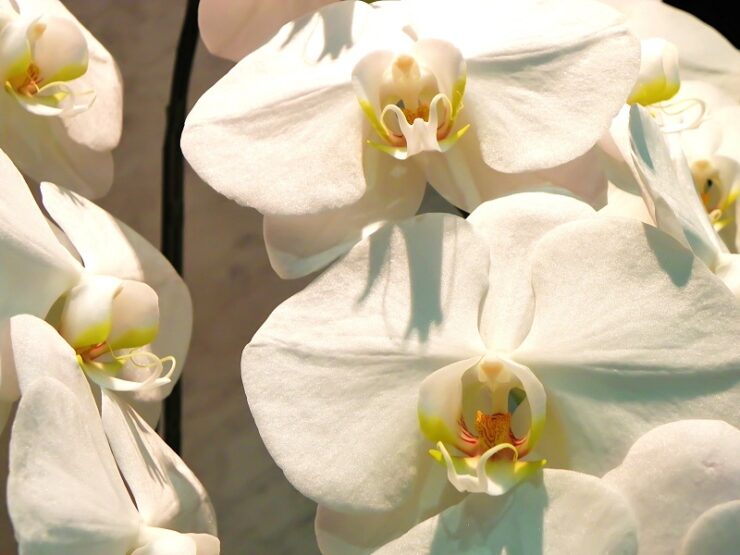
- Phalaenopsis orchids are commonly known as “moth orchids” due to the resemblance of their flowers to moths in flight.
- These orchids are native to Southeast Asia and the Pacific Islands and were first introduced to Europe in the 18th century.
- Phalaenopsis orchids have become one of the most popular orchids in the world due to their beautiful flowers, long bloom time, and ease of care.
- In the wild, these orchids are epiphytic, meaning they grow on trees or other plants, but they can also be grown in pots or mounted on a surface.
- They have been hybridized extensively, resulting in an incredible range of colors, shapes, and sizes.
- The largest specie, Phalaenopsis amboinensis, can grow up to three meters tall in the wild.
- They have been used in traditional medicine in various cultures to treat ailments such as coughs, fever, and digestive issues.
- The seeds of Phalaenopsis orchids are tiny and can only be seen under a microscope. A single seedpod can contain up to one million seeds.
- These orchids are considered air-cleaning plants, as they can remove pollutants from the air.
- The flowers of Phalaenopsis orchids are edible and have been used in salads and as a garnish in some cultures.
Phalaenopsis Orchid Care
Also known as moth orchids, are one of the most popular orchid varieties due to their stunning blooms and ease of care. Follow these tips to keep your orchid healthy and thriving:
Light:
Phalaenopsis orchids prefer bright, indirect light. Place them near a window with filtered sunlight or in a shaded area outdoors if the climate permits. Direct sunlight can scorch their leaves, so ensure the light is not too intense.
Temperature:
These orchids prefer intermediate temperatures between 65-80°F (18-27°C) during the day and around 60-70°F (15-21°C) at night. Avoid placing them in areas with drastic temperature fluctuations or in areas with cold drafts.
Water:
Water your Phalaenopsis orchid once a week or when the potting medium is almost dry. Overwatering can lead to root rot, so it’s essential to let the medium dry out slightly between waterings. When watering, thoroughly soak the potting medium and allow excess water to drain out of the pot.
Humidity:
Phalaenopsis orchids prefer a moderate humidity level of around 50-70%. You can maintain adequate humidity by placing the plant on a humidity tray or using a room humidifier.
Potting medium:
A well-draining potting mix is crucial for them You can use a mix of bark, perlite, and sphagnum moss, or purchase a pre-made orchid mix. Repot your orchid every 1-2 years, as the potting medium tends to break down over time.
Fertilizer:
Feed your orchid with a balanced orchid fertilizer (20-20-20) diluted to half strength every 2-4 weeks during the growing season. Reduce fertilization to once a month during the winter months.
Pruning:
Remove spent flower spikes to encourage new growth and maintain the orchid’s overall health. You can also trim back any dead or yellowing leaves.
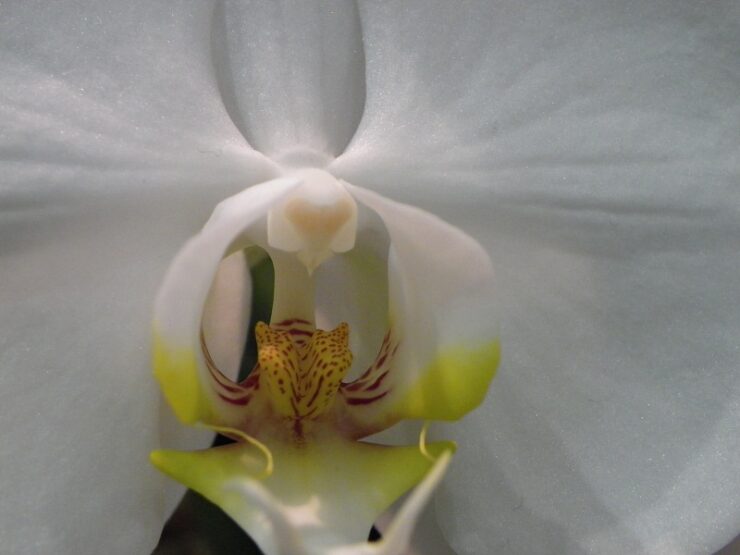
FAQ
Q: Can Phalaenopsis orchids be grown outdoors?
A: Yes, Phalaenopsis orchids can be grown outdoors in tropical and subtropical regions, as long as they are protected from direct sunlight and cold temperatures.
Q: How often should I repot my Phalaenopsis orchid?
A: Phalaenopsis orchids should be repotted every 1-2 years or when the potting medium breaks down and becomes compact.
Q: Can I propagate orchids?
A: Yes, Phalaenopsis orchids can be propagated through division or by growing new plants from stem cuttings or keikis (baby plants that grow on the stem).
Q: What pests and diseases affect Phalaenopsis orchids?
A: Common pests that affect Phalaenopsis orchids include mealybugs, spider mites, and scale insects. Diseases such as root rot and bacterial infections can also affect these orchids if they are overwatered or exposed to damp conditions.
Q: How long do orchids bloom?
A: Phalaenopsis orchids can bloom for several months, and some varieties can produce multiple flower spikes, resulting in a longer blooming period.
Q: How do I encourage my orchid to bloom?
A: Phalaenopsis orchids require a period of cooler temperatures (around 60°F or 15°C) to trigger blooming. You can also promote blooming by providing bright, indirect light, adequate humidity, and regular fertilization.
Q: Can I grow Phalaenopsis orchids in water?
A: While some orchids can be grown hydroponically, Phalaenopsis orchids prefer to be grown in a well-draining potting medium to prevent root rot.
Q: Are orchids toxic to pets?
A: Phalaenopsis orchids are generally considered non-toxic to pets, but it’s always best to keep them out of reach to prevent accidental ingestion.
Conclusion
Phalaenopsis orchid is a captivating and significant flower that has captivated the hearts of people for centuries. Its beauty, resilience, and cultural symbolism have made it a popular choice among orchid enthusiasts and a cherished part of various societies worldwide.
Not only is the Phalaenopsis orchid admired for its aesthetic charm, but it also has medicinal properties that have been utilized in traditional medicine for centuries. Research has shown that this orchid contains bioactive compounds with antioxidant, antimicrobial, and anticancer properties, making it a promising candidate for further study.
Whether you’re a seasoned orchid enthusiast or a beginner, caring for a Phalaenopsis orchid is a rewarding and enjoyable experience. With proper care and attention, these orchids can bloom for months on end, adding a touch of elegance and beauty to any space.
If you like this article read more here about December and January birth orchids.
